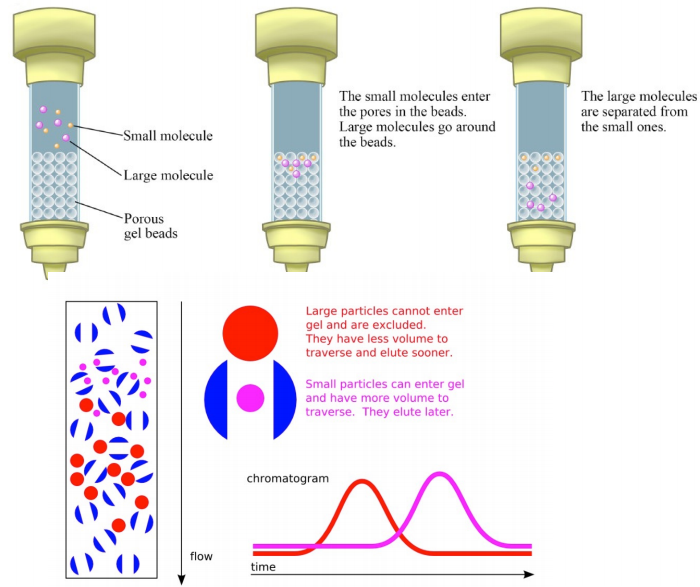9.4: Cromatografía de exclusión en gel
- Page ID
- 54079
La cromatografía de exclusión en gel (también llamada cromatografía de exclusión molecular, cromatografía de exclusión por tamaño o cromatografía de filtración en gel) es un método de aislamiento de baja resolución que emplea un “truco” genial. Esto implica el uso de cuentas que tienen pequeños “túneles” en ellas que cada una tiene un tamaño preciso. El tamaño se conoce como un “límite de exclusión”, lo que significa que las moléculas por encima de cierto peso molecular no encajarán en los túneles. Las moléculas con tamaños mayores que el límite de exclusión no ingresan a los túneles y pasan a través de la columna relativamente rápido abriéndose paso entre las perlas. Las moléculas más pequeñas, que pueden ingresar a los túneles, lo hacen, y así, tienen un camino más largo que toman al pasar por la columna. Debido a esto, las moléculas mayores que el límite de exclusión saldrán de la columna antes, mientras que las que pasen a través de las perlas se eluirán de la columna más tarde. Este método permite la separación de moléculas por su tamaño.



